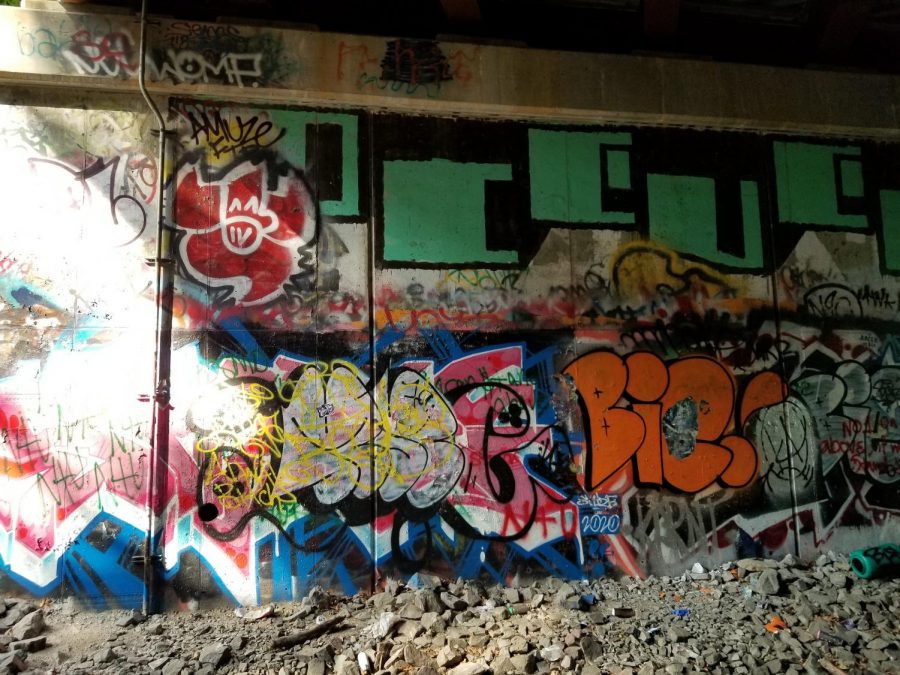Contemporary Graffiti and the City That Never Sleeps
An examination of an intricate art form hidden in plain sight.
My first real encounter with graffiti was a frigid February night— Valentine’s Day. I recall it being so due to a quippy exchange I had with an attendee at a McDonald’s drive-through in the later hours of the night, both lamenting how we had other things we’d rather be doing that night, rather than continuing our nights without a special someone. But in a stroke of irony that night, I may as well have found a special someone, in an art rather than an individual, finding an entrance to a world I otherwise would not have been aware of hidden right before my own eyes.
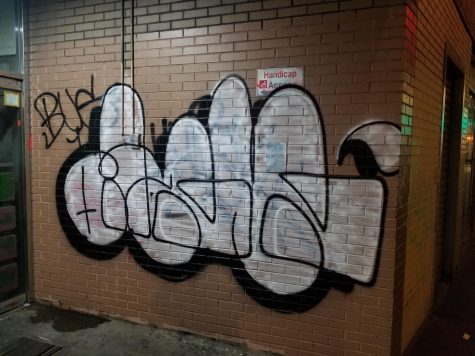
Before that chilly night, graffiti had simply been another splotch of color in the rich canvas of New York City; strings of words, letters, and numbers that seemed to be void of any meaning, scattered around aimlessly throughout the city in every nook, cranny, postbox, and pole, each piece unreadable by my untrained eye and indiscernible from its compatriots. Of course, there was likely plenty of graffiti that I could read, as the art is not inherently complicated or confusing, in fact quite the opposite, but it meant nothing to me. With many graffiti ‘tags’ not in fact being words with meaning on their own, such as the ‘goyo’ who frequents traffic light boxes in my neighborhood and the ‘420ove’ who enjoys leaving large colorful pieces where you would least expect them, I was often left wondering what was behind the colorful markings, but never teased enough by the art as to go out looking for the answers.
On that Valentine’s Day however, I was formally introduced to the art form once again. On an unfrequented underpass deep in Forest Park, taken there with friends with a similar urge to explore the nooks and crannies otherwise ignored, I became acquainted with graffiti in a more intimate manner than ever before.
This time it was a crashing wave of color rather than scattered splotches, as the underpass, lit up by the flashlights we were carrying, erupted in the colors of years of spray paint, with no inch of wall left untouched besides the precipices of the underpass, kept safe from the majority of writers frequenting the spot due to the simple fact that the average person cannot actually reach much higher than a couple feet above their heads.

Here was a city of Troy of urban art, each level of city being built on top of the ruins of its predecessor. It was a constantly developing location changing in character in between subsequent visits, shifted in sustenance and color each time by those who had visited in my absence. I had come for photographs, but left with a passion, a reignited interest for the art form which covers our city; and with the Coronavirus crashing into our city, state, and country, this time around I found plenty of time to develop it.
Graffiti from an outside perspective is, frankly, a mess, figuratively as well as literally. Plenty of it is often unreadable to the average person as artists push stylistic and structural limits to their breaking points, but even in the form of simple block letters it remains illegal, damaging, and disruptive.
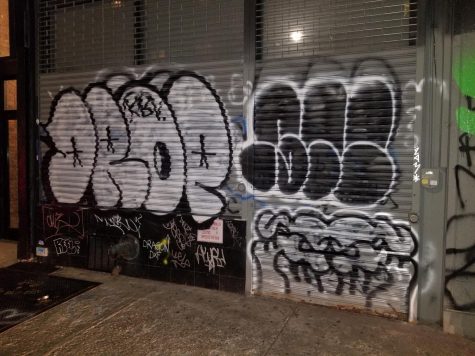
Contemporary graffiti can be seen as a sort of cross between calligraphy and raw expression, as graffiti writers are really just, at the core, simply writing words down. Calligraphy is described as “the art of giving form to signs in an expressive, harmonious, and skillful manner,” and graffiti arguably fits right into it; although perhaps not always in tune with the “harmonious” and “skillful” parts of the definition. There are no real entry requirements to the art, and there is no organized centrality behind it (an obvious result of the aforementioned ‘artistic expression’ also coincidentally being illegal and disruptive), leading to quality graffiti intermingling with and appearing directly alongside impressive displays of artistic skill and experience, glaring disparities between the new and the old, the amateurs and the experienced, as both groups of people frequent the same spots and often the same walls. You will not find a fourth grader’s arts and crafts piece hung up alongside a Van Gogh, and you will not see a beginner sculptor’s work placed beside Rodin’s, but quite often in the streets of New York City will you be able to come across hastily scrawled names side by side with the works of skilled and highly regarded writers. This leads to a rich mix of work from all sides of the artistic spectrum being thrown together into one big mess, and offers an amount of social depth that I have not found much of elsewhere.
Whereas in an art museum or gallery you are presented with a piece of art, the name that goes along with it, and means to contact and communicate with those who created it, you are not awarded such privileges with graffiti. Identification of authorship exists, as graffiti quite literally consists of names, but the means of contacting a specific artist often end there. This leads to a vast community of people who may have never met, but express and communicate through the paint in their can and the pen names they go by.
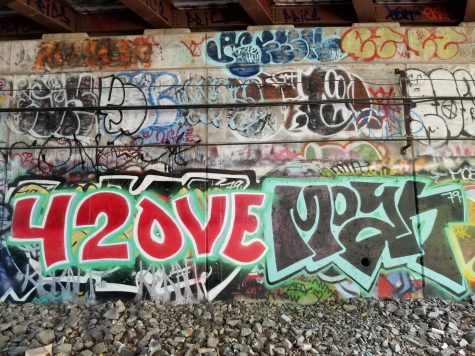
Unspoken rules and understandings are then a necessity for an art form that exists in anonymity. This includes respecting the work of others (especially those who are old, deceased, or highly revered), refraining from copying elements of other’s work, and avoiding the harming of personal property in artistic execution. Respect is ironically integral to an art form which exists in the defacement of public and private property, as the anonymity of the whole thing means that most of the time the only thing really regulating someone is themselves. There is no police force that will hunt you down if you vandalize someone else’s vandalism or copy the work of another artist, but to do so would attract plenty of unwanted attention that one would be better without. Breaking the laws of those already engaging in illicit activity is a mix to be avoided.
Although graffiti is a disorderly and disorganized art form, there is a substantial amount of order to the chaos. ‘Good’ graffiti can certainly be differentiated from ‘bad’ graffiti, as all of its writing can ultimately be boiled down to one thing: letter structure.
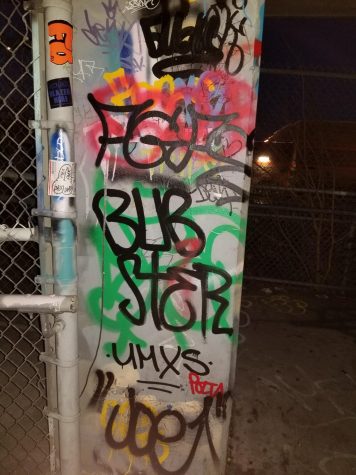
The art form is certainly not constrained by it, as it thrives off of constant reinvention and originality, but it is built on it. In all quality pieces of graffiti will you find bars, a term regarding the written structure of a letter. This is the template from which artists develop from, and the means by which pieces remain legible. The capital letter R, for example, consists of three bars: a spine, a bowl, and a leg; if not for the leg, it is no longer an R but rather a P; if not for the bowl, it is not a letter at all anymore. You will find dozens upon dozens of written R’s in graffiti around New York City, but the similarity between them all will be that: three bars.
Written pieces also require consistency and alignment, just as any other comparable form of calligraphy. This seems simple enough with basic writing, as all of us do on a daily basis, but when pushing the limits of written letters and seeking to find originality and creativity in a rather rigid alphabet, it can be easy for individuals to lose track of the original letter they are seeking to represent and consequently have the quality of their work deteriorate.
With a concrete understanding of letter structure, writers are then able to lift off from it, adding unique style and expression into their work and gaining both recognition and reputation on the streets they write on. This leads to the expressive and elaborate pieces that can be found all over the city; complex in design but ultimately compliant in structure.
Graffiti forces itself upon the passerby, never being wanted yet nonetheless appearing, covering the varied surfaces of public spaces with letters, numbers, and all sorts of doodles. It is painted over, buffed out, logged, and persecuted, but the art form continues to not only exist but flourish in urban areas, thriving off of the anonymity and vastness that a cities provide, being presented with more empty nooks, crannies, postboxes, and poles than will ever be filled, and an audience of passersby forever present as long as the city stands.
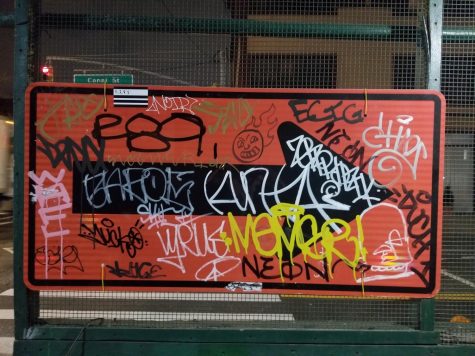
Though I do not partake in it (and highly recommend that you follow suit), I am engaged and intrigued by it, taking careful note of the marks left by those around me as I live and exist in the city around me. A developed understanding of the art form has allowed me to learn to appreciate the craftsmanship behind the skillful pieces thrown up around me, as well as take a sort of private, personal pride in being able to identify the ‘bad’ graffiti, understanding the errors that the artist is making. In the words of the Disney movie Ratatouille, “in many ways, the work of a critic is easy. We risk very little, yet enjoy a position over those who offer up their work and themselves to our judgment.”
I do not condone the damages done by the art form nor do I encourage its proliferation, but I have learned to appreciate i,t as it appears alongside us in New York City, as it has been here before us and will continue to exist long after us. I recognize the skill and craftsmanship behind it, allowing it to enhance my view of the world rather than detract from it, finding myself as engaged as I would be at the Guggenheim or MoMA each time I am out and about in the city. As whether we agree with its execution or not, and whether we condone its existence or encourage it, this splotch of color on the rich canvas of New York City is here to stay; and there’s more to it than meets the eye.
I do not condone the damages done by the art form nor do I encourage its proliferation, but I have learned to appreciate it, as it appears alongside us in New York City, as it has been here before us and will continue to exist long after us.

